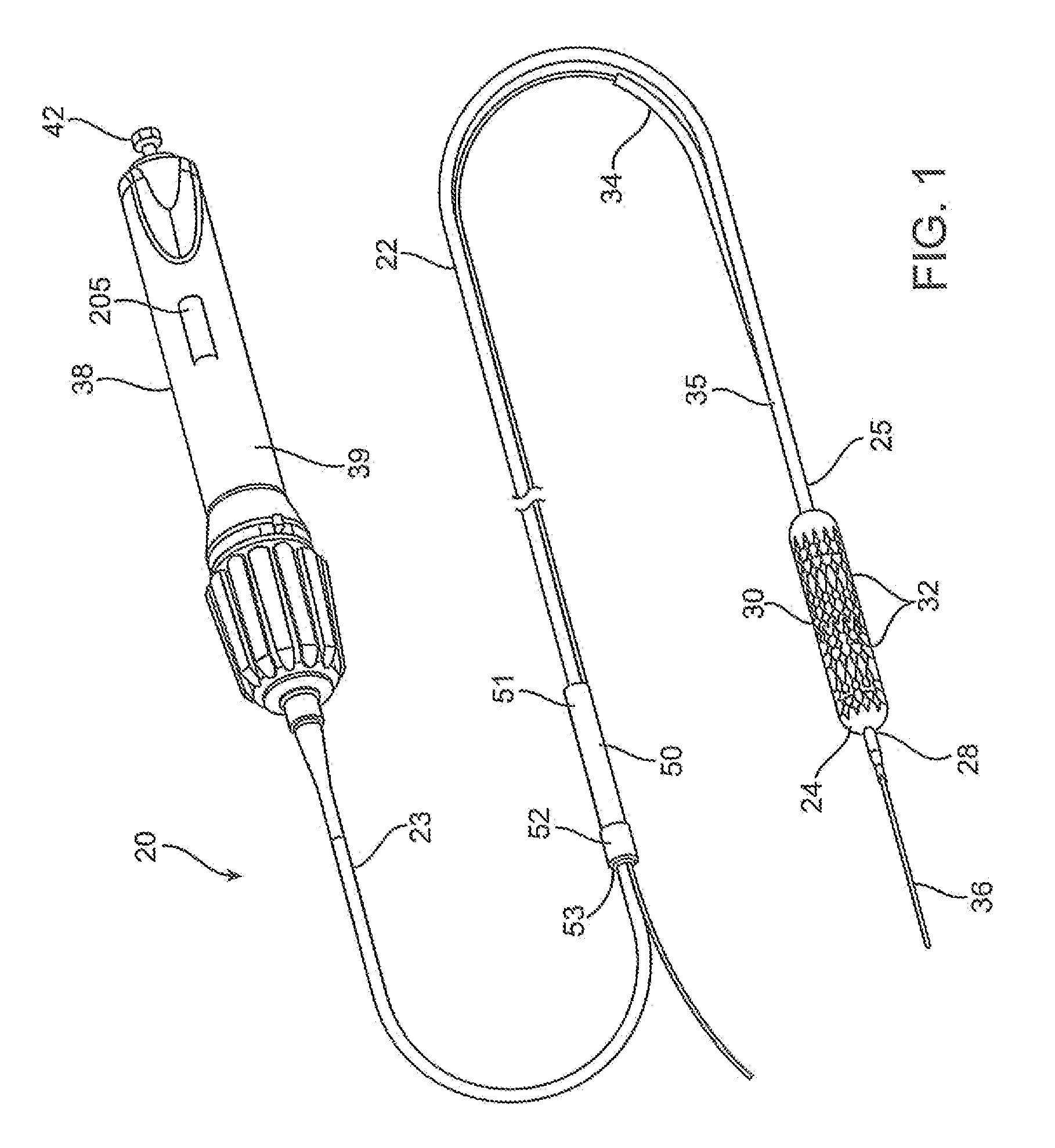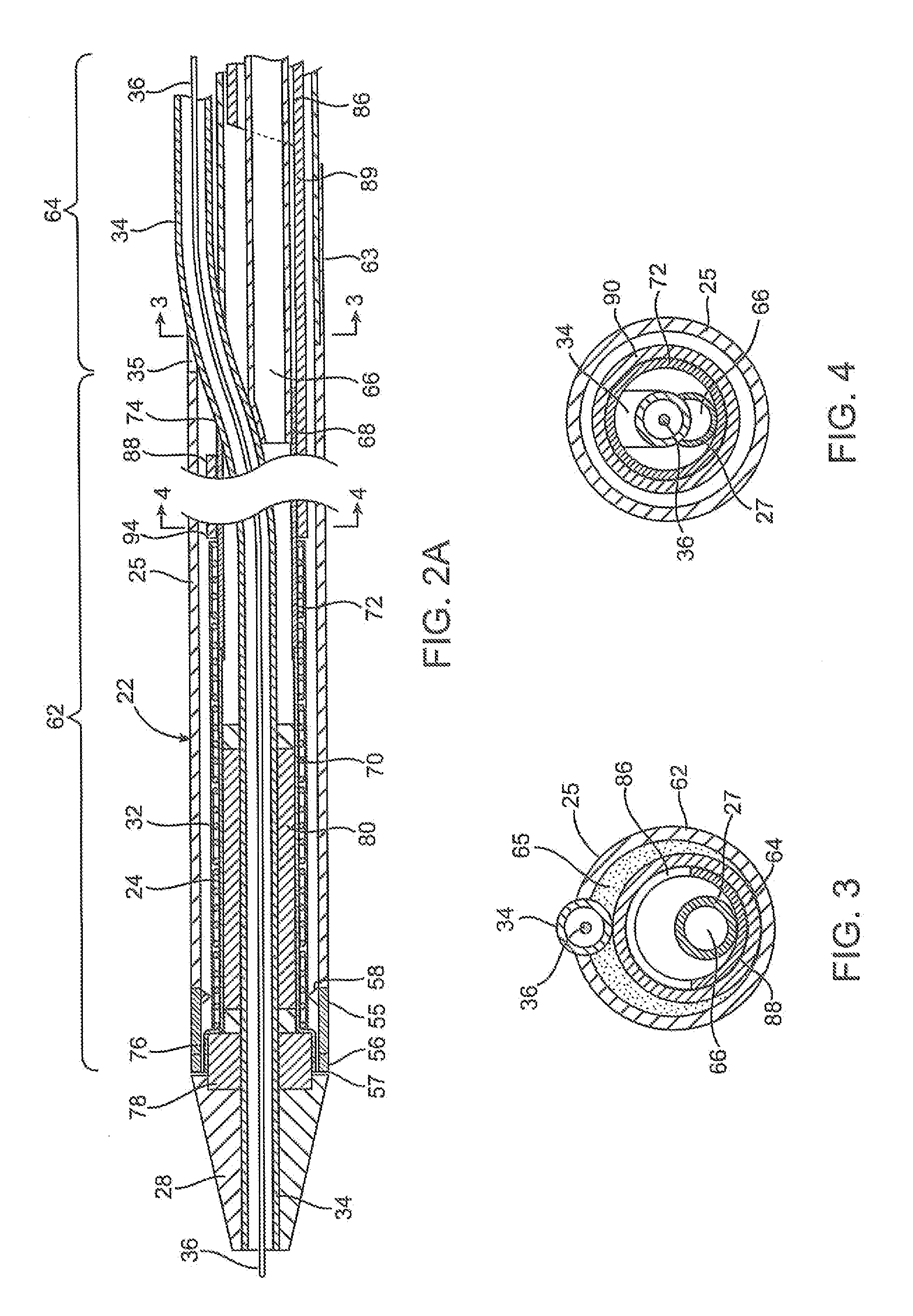Delivery catheter having active engagement mechanism for prosthesis
a technology of prothesis and delivery catheter, which is applied in the field of interventional catheters and prostheses, can solve the problems of stents, stents, and vascular disease, and achieve the effect of convenient accurate control of working or deployed length
- Summary
- Abstract
- Description
- Claims
- Application Information
AI Technical Summary
Benefits of technology
Problems solved by technology
Method used
Image
Examples
first embodiment
[0092] a stent delivery catheter according to present invention is illustrated in FIG. 1. The stent delivery catheter 20 includes a catheter body 22 comprising an outer sheath 25 slidably disposed over an inner shaft 27 (not shown in FIG. 1). An expandable member 24, preferably an inflatable balloon (shown in an inflated configuration), is mounted to the inner shaft 27 and is exposed by retracting the sheath 25 relative to the inner shaft 27. A tapered nosecone 28, composed of a soft elastomeric material to reduce trauma to the vessel during advancement of the device, is mounted distally of expandable member 24. A stent 30, which preferably comprises a plurality of separate or separable stent segments 32, is disposed on the expandable member 24 for expansion therewith. A guidewire tube 34 is slidably positioned through a guidewire tube exit port 35 in the sheath 25 proximal to the expandable member 24. A guidewire 36 is positioned slidably through the guidewire tube 34, the expandab...
second embodiment
[0222] In the second embodiment, illustrated in FIG. 31B, a rigid retainer 350 surrounds an elastomeric member 352. The retainer is generally cylindrical, and is provided with a conical inner surface 351. The conical inner surface 351 terminates at the distal end of the retainer where a gap “h” is provided. The gap “h” is preferably of a size large enough to allow passage of the stent segment(s) 32 with adequate clearance to prevent hang-ups or inadvertent engagements. The elastomeric member 352 has a relatively short cylindrical shape, and is in contact with the inner surface of the retainer 350. A generally cylindrical expansion element 354 is adjacent to the elastomeric member 352. As shown in FIG. 31B, a portion of the expansion element 354 may extend outside of the retainer 350. Alternatively, the expansion element 354 may be fully contained within the retainer 350. In either case, the expansion element 354 is fixed in position relative to the retainer 350, as both components a...
PUM
 Login to View More
Login to View More Abstract
Description
Claims
Application Information
 Login to View More
Login to View More - R&D
- Intellectual Property
- Life Sciences
- Materials
- Tech Scout
- Unparalleled Data Quality
- Higher Quality Content
- 60% Fewer Hallucinations
Browse by: Latest US Patents, China's latest patents, Technical Efficacy Thesaurus, Application Domain, Technology Topic, Popular Technical Reports.
© 2025 PatSnap. All rights reserved.Legal|Privacy policy|Modern Slavery Act Transparency Statement|Sitemap|About US| Contact US: help@patsnap.com



